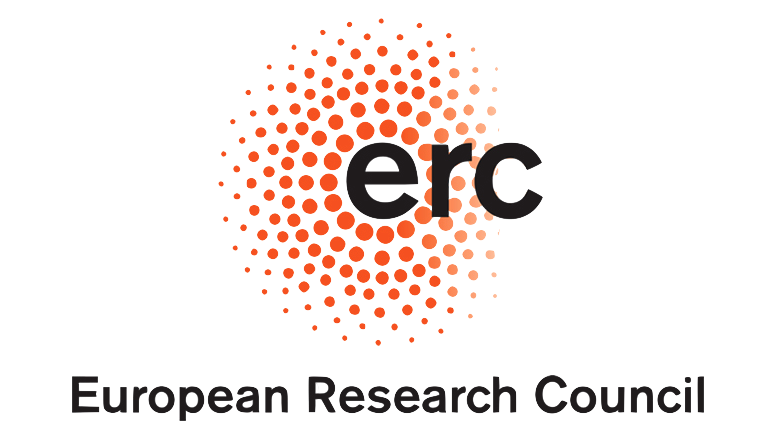
1) Higher-derivative string corrections & Dualities
String theory reduces to Einstein's theory of general relativity at low energies, but even classically it features beyond that an infinite number of higher-derivative corrections, governed by the inverse string tension \(\alpha'\). While these corrections can and have been computed to a few orders, we still lack a general closed form characterization. Hohm has been using, together with Siegel, Zwiebach and others starting in 2013, the framework of double field theory to describe these \(\alpha'\) corrections. Employing double field theory has the added advantage that the result is automatically compatible with duality, more precisely the T-duality governed by the group O(d,d) for string theory on a \(d\)-dimensional torus.
In 2018, Hohm and Zwiebach showed how the \(\alpha'\) corrections could be completely classified to all orders for cosmological backgrounds (backgrounds that depend only on one coordinate -- cosmic time). This gives one a systematic method to test a higher-dimensional theory for T-duality, which in turn was used by Codina, Hohm and Marques in Phys.Rev.Lett. 126 (2021) 17, 171602 to prove compatibility with T-duality of the \(\alpha'^3\) corrections (fourth powers of the Riemann tensor) in string theory, which intriguingly are proportional to the transcendental number \(\zeta(3)\).
Motivated by this, Bonezzi, Codina and Hohm revisited the computation of higher-derivative corrections fro the beta functions of a worldsheet theory, using a duality invariant framework. In fact, it had been an open problem for a while to compute duality invariant beta functions to higher orders in \(\alpha'\), and [2103.15931 [hep-th],2111.05102 [hep-th]] clarified and partially solved these problems.
Moreover, this framework has been used to explore possible string solutions that are non-perturbative in \(\alpha'\), including de Sitter vacua (see the Second Prize Essay for the Gravity Research Foundation 2019 Awards for Essays on Gravitation). Finally, this formulation has also been used by Gasperini and Veneziano in order to show that the big bang singularity might be resolved in string theory thanks to the \(\alpha'\) corrections [arXiv:2305.00222 [hep-th]]. Their techniques were then further applied by Codina, Hohm and Zwiebach to show that the singularity of the 2D black hole in string theory may be resolved similarly. This was one of the main objectives of Hohm's ERC Consolidator Grant "Symmetries and Cosmology".
2) Homotopy algebras and (quantum) field theory
Homotopy algebras are generalizations of familiar algebras such as associative algebras or Lie algebras, for which the defining relations (like associativity or the Jacobi identity) do not hold exactly. Rather, they only hold "up to homotopy", with the failure being governed by higher maps or brackets. In particular, \(A_{\infty}\) algebras denote the homotopy generalization of associative algebras, and \(L_{\infty}\) algebras denote the homotopy generalization of Lie algebras. Remarkably, any (semi-classical, perturbative) field theory is fully encoded in an \(L_{\infty}\) algebra [1701.08824 [hep-th]].
Our group has applied this relation in numerous contexts:
i) Hohm, together with Arvanitakis, Hull and Lekeu, showed that the notion of "homotopy transfer" from pure math can be interpreted as the integrating out of degrees of freedom, like in effective field theory [2007.07942 [hep-th], 2106.08343 [hep-th]]. More precisely, homotopy transfer maps an \(L_{\infty}\) algebra on a certain space to another `quasi-isomorphic' \(L_{\infty}\) algebra on another space, which generally is not isomorphic, yet homotopy equivalent. Passing over from a larger to a smaller field space, as when integrating out fields, is then just homotopy transfer. Applied to string field theory, this allowed one to clarify the "Wilsonian" effective action that originates from integrating out certain massive string modes (while possibly leaving other equally massive modes in the spectrum).
ii) Chiaffrino, Hohm and Pinto showed that homotopy transfer can also be employed in order to pass from the highly gauge redundant fields of gravity to gauge invariant ones, to all orders in perturbation theory [2012.12249 [hep-th]]. This solved a problem in cosmological perturbation theory that had been open since Bardeen introduced the gauge invariant variables named after him for the free theory of pure gravity around FRW backgrounds.
iii) Bonezzi, Diaz-Jaramillo and Hohm used homotopy algebras to demystify the so-called "double copy" relations between gauge theories such as Yang-Mills theory and gravity. One uses that Yang-Mills theory, viewed as an \(L_{\infty}\) algebra, is the tensor product of the color Lie algebra with another kind of homotopy algebra (a homotopy commutative or \(C_{\infty}\) algebra, a special case of an \(A_{\infty}\) algebra) that can hence be viewed as the `kinematic algebra' of Yang-Mills theory. Thus, there is a perfectly reasonable notion of `stripping off' color from Yang-Mills theory: even though this doesn't lead to a physically meaningful theory, it does lead to a meaningful homotopy algebra. Using some further hidden algebraic structures on this space, one can then take the tensor product with a second copy of itself, and this gives rise to the \(L_{\infty}\) algebra encoding double field theory (in the realm of double copy the proper formulation of gravity coupled to B-field and dilaton). Remarkably, these techniques could also be used in 2023 in order to construct weakly constrained double field theory, for purely toroidal dimensions, to quartic order in fields. This was the first decisive breakthrough for weakly constrained double field theory since its first formulation to cubic order in 2009 by Hull and Zwiebach and was another one of the core objectives of Hohm's ERC Consolidator Grant.
iv) Chiaffrino, Hassan, Hohm and Pinto obtained results on a "cohomological" reformulation of quantum mechanics (and by extension of quantum field theory) [2112.11495 [hep-th], 2412.06912 [hep-th]]. Instead of working with operators and Hilbert spaces, or the Feynman path integral, one works with `off-shell' Batalin-Vilkovisky (BV) algebras and factorization algebras (as pioneered in the work of Costello and Gwilliam).
On the surface, these algebras look nothing like ordinary quantum mechanics, but the latter is recovered upon going to cohomology via homotopy transfer. The hope is that this third formulation of quantum physics will eventually lead to useful rigorous formulations of, say, quantum Yang-Mills theory and quantum gravity.
Copyright © 2025 Gravity, Quantum Field Theory & Mathematical Physics Group